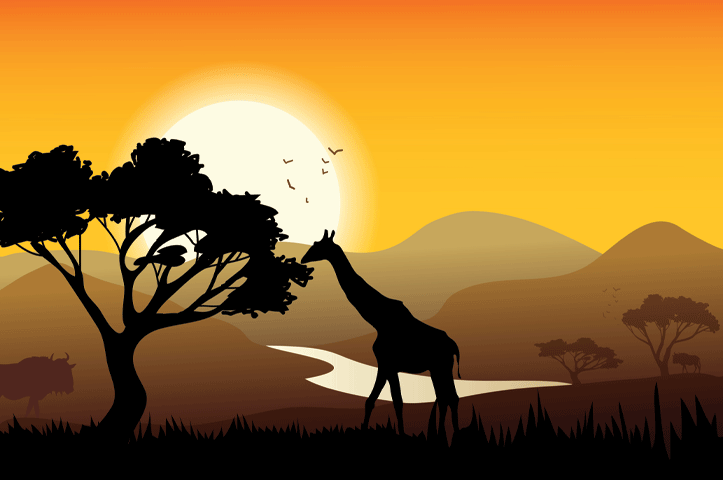
kenya Safari.
Visiting Kenya for a Safari? Here is the Information You need
Kenya is one of the nations in East Africa famed for its stunning landscapes and substantial natural reserve. The Indian Ocean coast was a source of historically significant ports from which goods from Arabian and Asian traders traveled across the continent for many centuries.
Along the coast is one of Africa’s most stunning beaches. It is dominated by Muslim Swahili cities like Mombasa, a city of history that contributed significantly to this region’s culinary and musical heritage. Inland is regarded as an affluent highland famous for its tea plants which provided a substantial source of revenue during the British colonial period, in addition to their many species of animals, including lions, elephants, and rhinoceroses. and the hippopotamuses.
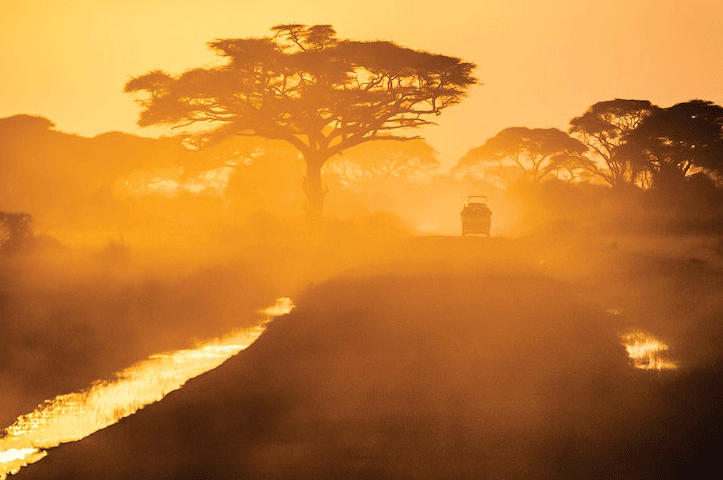
Lakes and rivers define Western regions in Kenya and are forested. Additionally, a small portion of the north is desert and semidesert. The diverse wildlife of Kenya and its vast geographic range attracts many European and North American visitors, and tourism is an essential economic engine for Kenya.
Kenya Safari Places Summary
Weather in Kenya
| Safari Name | wildlife to expect | Temperature | Days Required | Nearest Airport | Best Time to Visit | Average Cost from the UK | |
| Lake Nakuru Safari | Two nights and 3 days | 30-40 | c | Nanyuki (NYK) | July to December | 800 to 1000 GBP | |
| Amboseli Safari | large herds of elephants, buffaloes, giraffes, zebras, lions, cheetahs, nocturnal porcupine | 26-36 | 2 Days | Amboseli (ASV) | June to October | c | |
| Tsavo Safari | Elephants, Lions, Buffaloes, Leopards, Hyenas, Giraffes, Zebras, and abundant birdlife | 20-31 | Grevy’s zebra, SZebra ostrich, reticulated giraffe, gerenuk, and the beisa oryx | Mombasa (MBA) | June to October and January to February. | 800 to 1000 GBP | |
| Samburu Game Reserve Safari | Grevy’s zebra, Somali ostrich, reticulated giraffe, gerenuk, and the beisa oryx | 15-28 | 3 to 5 Days | Jomo Kenyatta International Airport (NBO) | June to October and December to March | 400 to 800 GBP | |
| Laikipia Plateau Safari | black rhinos, elephants, wild dogs, Grevy’s Zebra, Jackson’s hartebeest, reticulated giraffes, leopards | 12-15 | 3 nights and 4 days | Jomo Kenyatta International Airport (NBO) | June-to-September | 700 to 1200 GBP | |
| Mombasa and Surrounds | Mundania rock, laggards fall, big herds of elephants, buffaloes, giraffes, antelopes, zebras, birdlife, predators | 23-32 | 3 to 4 Days | Mombasa (MBA) | July through October | 800 to 1000 GBP | |
| Mount Kenya and Aberdares | lions, leopards, elephants, East African wild dog, forest hogs, bushbuck, mountain reedbuck, cape buffaloes, suni, side-stripped jackal, elands, duiker, and olive baboon | 5-15 | 4 to 5 Days | Nairobi Wilson (WIL) | December to March | 2,446 to 2500 GBP | |
| Rift Valley Lakes | Rift Valley. Lions, leopards, African elephants, rhinos, buffaloes, cheetahs, giraffes, antelopes, zebras, and primates ranging | 25-32 | 3 to 4 Days | Nairobi Wilson (WIL) | June to March | 750 to 1250 GBP | |
| Southern Safari Circuit | lion, elephants, buffalo, cape buffalo, Wild dog, Elephant, Lion, Lesser kudu, Greater kudu, Roan antelope, Sable antelope, Cheetah, Leopard, Spotted hyena, Grant’s gazelle, Defassa waterbuck, Impala, Zebra, Giraffe, Hartebeest, Eland, Jackal, Crocodile | 20-40 | 6 to 7 Days | Cochin International Airport | October to November | 3,000 to 5,000 GBP | |
| The Coastal Belt | Elephants, Lions, Buffaloes, Leopards, Hyenas, Giraffes, Zebras, and abundant birdlife | 19-21 | 3 to 4 Days | Maroochydore (MCY) | September to November | 750 to 1250 GBP | |
| Aberdare National Park | lions, leopards, elephants, East African wild dog, forest hogs, bushbuck, mountain reedbuck, cape buffaloes, suni, side-stripped jackal, elands, duiker, and olive baboon | 7-21 | 2 Days | Nanyuki Airport | January and February, June to September | 750 to 900 GBP | |
| Lake Naivasha National Park | giraffes, zebras, buffaloes, hippos, buffaloes, leopards | 17-27 | Days Required | Nairobi Wilson (WIL) | August to October | 800 to 1100 GBP |
Kenya’s climate Kenya is a mix of humid along the coast to a mild interior in the north and northeast parts throughout the region. The region is blessed with a huge amount of sunshine during the month. It’s usually cold in the evening and early in the morning in the inland areas at higher elevations.
“The “long rains” season is between March/April and between May and June. It is the “short rains” season that runs from October to November and December. The rain is usually intense and is seen in afternoons and evenings. The changing climate is altering the pattern of rain that causes an extension of the rains which are not as long and has caused flooding and reduced frequent droughts, which used to occur every year. This has caused severe droughts such as the one in the 2008.09 Kenya drought.
The temperatures remain high throughout the season of tropical rains. The hottest season of the year falls from March through February which is when you can expect the onset of heavy rains. The coldest season is the month of July which runs from mid-August through the end of July.
Wildlife in Kenya
Kenya’s geographic diversity means it is home to a variety of wildlife. The nation’s most renowned national parks and reserves include Masai Mara, Amboseli, Tsavo East and West, Samburu Buffalo Springs, Meru and Laikipia, and Laikipia All of these are home to the largest and all of the Big Five, i.e. elephant as well as leopard buffalo, lion and leopard, and Black rhino.
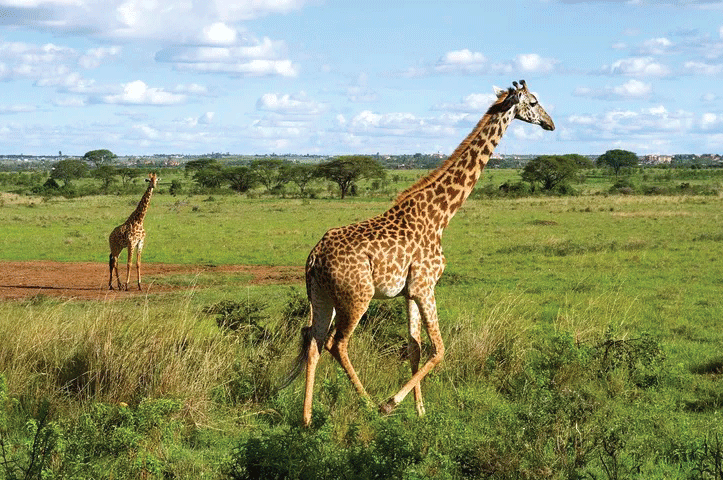
Kenya is one of the most breathtaking bird-watching spots. A checklist of more than 1,000 species places it in the 15 top countries in terms of bird species diversity. However, this doesn’t suffice to show the diversity of species beautiful and vividly displayed across the nation.
Masai Mara Safari
The Masai Mara National Reserve is located in the southwest region of Kenya and covers an area of 1,510 square kilometers (583 acres) The Masai Mara National Reserve is an area of stunning vistas as well as abundant wildlife and vast plains.
The most iconic Masai Mara safari delivers many things to do since the reserve hosts an abundance of wildlife, including over two million wildebeests, zebras, antelopes, and more, which make up the famed Great Migration. &Beyond has two lodges within the Masai Mara; Kichwa Tembo Tented Camp and Bateleur Camp.
It is an ideal photographer’s as well as a naturalist’s paradise with abundant wildlife such as giraffes, buffalo, and cheetah along with the migration of wildebeest and Zebra. TZebraare many leopards to be seen. endangered black rhinos can be found in the thickets, as well as large hippo rafts and huge Crocodiles living within the Mara River. The park also hosts more than 500 bird species.
Wildlife to expect
It’s an ideal place to take pictures and a naturalist’s paradise, with lots of species of wildlife like a giraffe, cheetah, buffalo, and giraffe, as well as the annual migration of wildebeest as well as the Zebra. IZebraworth visiting because a variety of leopards can be seen. Black rhinos that are endangered can be seen in the thickets and large hippo rafts as well as massive Crocodiles residing in the Mara River. The park has more than 500 species of birds.
Masai Mara Weather
JAN – Feb
Summer is a time of hot and dryness. Because water is scarce at this time of the year, go to the nearest water hole to take in an excellent view of wildlife. Make sure that you are looking at the sky also as it’s the best season for the migration of birds.
MARCH – APRIL – MAY
This time of the year is often referred to as the “long rains’, or as the wettest in Masai Mara’s 2 seasons. It’s still extremely hot during the month of summer but it’s also wet in April. On the positive side, rains may cause the regrowth of local vegetation giving the Masai Mara every shade of green.
JUNE – JULY – AUGUST – SEPTEMBER – OCTOBER
Dry and warm weather as well as generally sunny skies. Perfect conditions for safaris in the wild and it is a popular time to embark on safari tours within Masai Mara. Masai Mara.
NOVEMBER – DECEMBER
The two months remaining of the year are called “short rains,” or less disruptive than the other seasons. The forecast calls for clouds that are cloudy and overcast, and rain showers during later evenings. The temperatures remain quite high, but some mornings might be chilly and cold.
Dry and rainy seasons
DRY SEASON – JUNE THROUGH OCTOBER
RAINY SEASON – NOVEMBER THROUGH MAY
Masai Mara Yearly Temperature
| JAN | FEB | MAR | APR | MAY | JUN | JUL | AUG | SEP | OCT | NOV | DEC | |
| max ° C (day) | 21° C | 22° C | 26° C | 25° C | 23° C | 21° C | 22° C | 21° C | 24° C | 22° C | 22° C | 24° C |
| min ° C (night) | 15° C | 14° C | 11° C | 11° C | 12° C | 16° C | 14° C | 13° C | 14° C | 16° C | 15° C | 12° C |
| max ° F (day) | 70° F | 75° F | 71° F | 71° F | 70° F | 66° F | 69° F | 73° F | 70° F | 71° F | 72° F | 71° F |
| min ° F (night) | 51° F | 53° F | 51° F | 58° F | 51° F | 52° F | 58° F | 51° F | 52° F | 59° F | 54° F | 51° F |
Best time to Visit Masai Mara:
The best time for a trip to Masai Mara is between the beginning of July to September, during which you can witness the wildebeest migration going full speed. It can be crowded in midsummer, so be sure to visit in the middle or closing of the month in order so that you can enjoy the wildlife feast without masses. The months of March to May are the wettest, with wildlife scattered, but there are lower-cost options for those who aren’t worried about the changing seasons. The vast Plains Maasai settlements and the Big Five are worth the effort to see for themselves.
How Many Days Are Required to See Whole Masai Mara?
It is suggested to spend at least five days and 4 nights stay at Masai Mara National Park. Experience the wide range of wildlife within the Masai Mara National park.
Masai Mara Safari Cost from UK
Based upon the facilities of your package and the number of days that are available that you are using it, the price could be just £600 per person to £2000.
Lake Nakuru Safari
Lake Nakuru is one of the Rift Valley lakes which sits at 1754 meters (5,755 feet) above sea level. It is located in the southern region of Nakuru,, situated within the valley that forms the Rift located in Kenya and is located in the Lake Nakuru National Park.
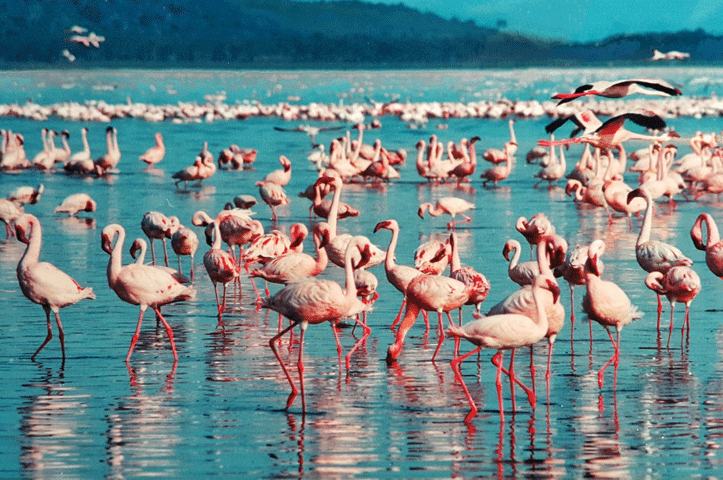
Lake Nakuru National Park (188 km2 7 miles 2.) The park was established in the year 1961, in the vicinity of Lake Nakuru, close to Nakuru Town. It is most famous for its thousands and occasionally millions of flamingos who nest in the waters. The water’s surface is shallow and the lake is not obvious due to the constantly changing color of pink. Flamingos are in abundance in the lake. It is dependent on water and food conditions. The best vantage point to see this lake can be found at Baboon Cliff. Additionally, there is a total area of 188km (116 miles) around the lake, which is secured by a nature reserve that protects giraffes as well as rhinos of both black and white.
The park was recently extended to include an area of habitat for rhinoceros. This has led to the building of a fence to stop poachers instead of restricting the movement of animals. The park extends for 12.1 kilometers along the southern border of the Soysambu Conservancy, which is an expansion that could result shortly of the rhino’s habitat and being the last remaining corridor of wildlife that connects Lake Naivasha.
Wildlife to expect
Lake Nakuru is one of the Rift Valley lakes that sit at 1754 meters (5,755 feet) above sea level. It is situated in the southern part of Nakuru located within the valley of the rift in Kenya it is protected by Lake Nakuru National Park.
Lake Nakuru National Park (188 km 2, 73 miles 2.) It was founded in 1961, around Lake Nakuru, close to Nakuru Town. It is known best for its thousands, and sometimes millions of flamingos that nest on the shores. The shallow surface of the lake is usually not visible because of the constantly changing mass of pink. There are flamingos in abundance in the lake dependent on food and water conditions, and the most ideal vantage point to view the lake is Baboon Cliff. Additionally, there is an area of 188km (116 miles) surrounding the lake, which is cordoned off to create a sanctuary that will guard giraffes and white and black rhinos.
The park has been recently expanded to include a habitat for the rhinoceros. This has required the construction of a fence to deter poachers, instead of limiting the moving of wildlife. The park stretches 12.1 km along the southern border with the Soysambu conservancy which is an expansion that could be in the future of the rhino’s habitat as well as the only remaining corridor of wildlife to Lake Naivasha.
Lake Nakuru Weather
The climate of Lake Nakuru is mild and the temperatures remain always the same throughout the year. The temperatures during the day are moderate between the mid – and upper 20s, but it cools down during the night. It is recommended to wear warm clothing for games in the morning is essential. The most humid month is April through May. The rest of the year is dry, with just an occasional shower all year long.
Starting in June to February
The most enjoyable days are generally cool and sunny, but be careful not to overheat. There is very rarely rain, but do not be surprised by a shower that may occur anytime. It is recommended to dress warmly for your first game day drives.
- June-July August, September, October, November, and December The weather is predominantly sunny with occasional drizzle. Temperatures rise to 25degC/77degF at midday, but the period between the beginning and the end of the day can be cool, with temperatures of 9degC/48degF.
- January and February January and February, which are ahead of the break-in rain, are the driest and warm of the months on our calendar. Temperatures can reach 28degC/82degF when they rise. Be aware of the cold that can be felt early in the morning, as temperatures only rise to 9degC/48degF.

It’s wet beginning from March to May
There are plenty of cloudy, overcast days in April’s Wet season, but it’s not common to have rain throughout the day. The temperatures in the afternoon can be comfortable around 27 degrees C/81 degrees F. Mornings in the early mornings are generally warmer with temperatures around eleven degrees Celsius or 52 degF. April is the month with the highest rain.
- March or April are the initial signs of rain, but it’s unusual for March to receive plenty of rain. Expect temperatures to rise by the afternoon, and will be at 27degC/81degF.
- April is the wettest month, but it doesn’t often shower over long durations.
- May The rains are beginning to recede but afternoon showers remain frequent.
Best time to Visit Lake Nakuru:
The most popular months to come for visiting Lake Nakuru National Park are January, February, March, July July August the month of September, and then October. This is due to the driest times this time of the year. In the end, a trip to the park could be more lucrative and enjoyable. Park grass tends to be tinier and allows you to see the animals better The roads are also less muddy, which can mean less hassle for drivers and the majority of the daytime animals roam the park with no restrictions which means that you don’t have to travel for a long time to see the animals. Furthermore, animals in the evening are shaded and are close to the spot you are in. If you’re considering camping or taking your picnic, this is the best time for you as they get very little rain, meaning you’ll have fewer interruptions to your journey.
How Many Days Are Required to See Whole Lake Nakuru?
Lake Nakuru national park is a small park that can be viewed in about 3 hours a visit.
Lake Nakuru Safari Cost from the UK
Amboseli National Park
You get to do, experience, and enjoy a lot of things during your safari to Lake Nakuru National Park and Masai Mara National Park at this Price Per Person of £1,042 for Four Days.
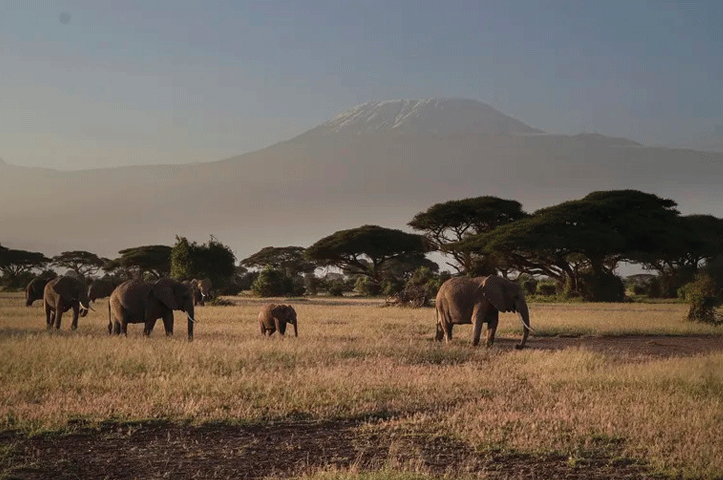
Amboseli National Park, formerly Maasai Amboseli Game Reserve, is a park that is part of the national parks in Kajiado South Constituency in Kajiado County, Kenya. The park covers 39,206 ha (392.06 acres) in size in between an 8000 square kilometers (3,100 square miles) ecosystem that stretches across the boundary that separates Kenya as well as Tanzania. It is home to the majority of people are Maasai but, other people from other parts of the country have made the move to Kenya because of the boom in the tourism-driven economy as well as the intense farming that is occurring in the swamps. This low-rainfall area has an average of 350 millimeters (14 inches) and is among the most stunning safari experiences in the world. Hundreds of species of birds which include water birds such as pelicans, kingfishers, the hammerkop, and crakes, as well as 47 different species of Raptors.
Amboseli National Park Safari
Amboseli is often known as the “Land of Giants’ because of the magnificent elephants that wander the park, with huge trunks. These animals are viewed against the breathtaking landscapes of Mt Kilimanjaro, which makes an amazing background for the park’s modest dimensions. In addition to elephants, many plains animals can be seen easily. Great photo opportunities are on the table in the early morning hours, which is the best time to take photos from Kilimanjaro.
Wildlife to expect
Amboseli is one of Kenya’s most famous parks and offers excellent opportunities to observe wildlife. It is renowned due to its elephants but the majority of the big game animals can be seen in the park. The black rhino is now extinct but four other species of the Big Five are present. The plains host several large herbivores, including wildebeest Burchell’s Zebra, Thomson’s gazelle, as well as Grant’s.
Amboseli Weather
The conditions in Amboseli NP are extremely warm and humid. The rain usually comes in short, light showers. During the daytime expect temperatures to hover at about 28 degrees Celsius/82 degrees Fahrenheit. In the evening, temperatures are expected to be around 15 degrees. Activities that take place in the early morning hours, like game drives require warm clothing. “Long rains “long rains” typically begin around mid-March and continue until the middle of May. The “short rains” occur between late October and mid-December.
The dry season starts from June to September
Dry season between June through September
The coldest months occur in winter, and they are usually sunny and bright daytime. It is very dry and has almost no rain.
- The months of June and July are the most popular. The temperatures are usually bright and sunny. Expect average temperatures of 25degC/77degF in the afternoon.
- The months of August and September are the aridest. Temperatures throughout the day are increasing until the rain stops. Although the temperatures are at their highest, however, the average temperature for September is 26degC/79degF.
The wet season begins in October and through May
The wet season It is the wet time between October and May
The wet season. It is distinguished by the ‘short rainfalls and then long showers. The months of January and February offer a time between dry and rainy weather. It can be challenging to drive through May and April as the road conditions start to become more difficult.
- October, November, and December rains usually begin in October and peak maximum in November. It’s not common for it to rain continuously throughout the day However, afternoon storms are very frequent. The average temperature during that day’s duration is 28, which is 82 degrees. It is a hot day. It will, however, rise before it starts to rain.
- Jan and Feb the precise date between the start and the end of the dry period that separates the Wet and Dry seasons aren’t always certain. However, February is the month with the highest temperatures, and the mean temperature during the day is 30°C/86 degrees Fahrenheit (expect higher temperatures and more extreme peaking).
- March, April, and May prolonged rains usually start between mid and the end of March. It is rare to see rain all day long, but afternoon showers aren’t uncommon. The most humid month is April. Temperatures can rise in the afternoon, up to 28degC/82degF.
Best time to Visit Amboseli:
AMBOSELI It’s accessible throughout the year. However, for the best wildlife viewing be sure to avoid the seasonal rain.
The dry time between June and October is believed to be the most suitable season to view animals in Amboseli With just some drops of rain falling, wildlife is forced to retreat into the swamps of the park, in which the water in the underground Kilimanjaro is an unending source of water throughout the year.
How Many Days Are Required to See Whole Amboseli?
Amboseli is a great alternative for first-time safari lovers or who are making their first trip to Kenya. The small area allows you to explore almost everything in two days. The proximity to Nairobi means there is no need for a long-distance or take long flight. The flights that are short-haul which link Wilson Airport and the Amboseli airstrip take less than an hour using a light aircraft.

Amboseli is an ideal location to start to begin the Kenya safari. Its proximity to Nairobi may be a reason why a lot of Kenyans traverse through the weekend and during holidays to attend school. There are also traffic jams during Easter and Christmas, so your Africa Safari Expert can assist you to arrange your safari keeping this in mind.
Best time to Visit Amboseli:
Although Amboseli is accessible any time of the year, it is recommended to go during the dry season, which runs from June through October, and from January to February.
The most effective time from June through September and January to February is the most ideal time to watch wildlife in general
Amboseli Safari Cost from the UK
Amboseli Safari (Premier Experience) prices for accommodation and safari activities in Kenya start from UK £574 to UK £956 each night, for one guest on average. The highest-priced ones reach £1339 for a night for incredibly exclusive luxury and exclusive experience.
Tsavo National Park
Tsavo East National Park is among the biggest as well as oldest national parks in Kenya at 13,747 square meters. It is located in a semi-arid region that was earlier known as Taru Desert, Taru Desert was inaugurated in April 1948. It is located near Voi, the capital city. Voi is located in Taita Taveta County which was part of the earlier Coast Province. Parks are divided into east and west sections by an A109 road, being connected by railway. The park’s name is in honor of being situated on the Tsavo River, which flows from east to west in the park’s national. It shares its borders by it with the Chyulu Hills National Park, and also Mkomazi Game Reserve. Mkomazi Game Reserve is located in Tanzania.
Tsavo National Park Safari
It is famous for its enormous herds of elephants, as well as its breathtaking landscapes. Tsavo is among the game reserves which aren’t as popular within Kenya and is perfect for those who wish to enjoy the wild side.
A few main attractions in Tsavo National Park are the stunning Mzima Springs, which is where the crystal-clear, clear, crystal-clear water runs through the volcanic rocks.
Wildlife to expect
Tsavo East provides stunning wildlife views in the wild. Each of the big five is present in this. The elephants are seen quite often and their dusty red coat allows them to stand out from an otherwise deserted area. Out of all large cats, lions are likely to be the ones most visible. Buffalo, zebZebrand many Masai Giraffes belong to the other species that you may expect to see.
Tsavo Weather
Tsavo West NP has a climate that is characterized by dry and hot conditions. In the daytime, you can expect temperatures of around 29degC/84degF and 18degC/64degF at the night. Cold mornings mean that warm clothing is an ideal choice when you are planning your early-game drives. The highest amount of rain falls between April through November.

Dry season from June through September
The cooler months are filled with sunshine, with very little rain. Warm clothes are essential for playing on the open road.
- June and July The summer months are sunny and get temperatures as high as 25degC/77degF. The early mornings and evenings are cool, with an average of 15degC/59degF.
- August and September The temperatures slowly rise. Even though temperatures increase significantly in September, the average temperatures in September are 26 degrees Celsius/79 def.
The wet season from October through May
The ‘short rains’, followed by the long rains comprise this Wet season. Between these two times is a dry period that falls between January and February.
- October November, December, and October November is a prime time for rain. The rains typically begin in October, however, the exact timing differs between years. The afternoon storms are often sweeping through. It’s typically 30degC/86degF during the daytime, but rain tends to cool things down.
- January and February February is the month with the highest temperatures average temperatures in the afternoon are 32degC/90degF. These months are characterized by a dry spell in between the rains that are long and short. It’s difficult to predict precisely when they’ll begin or end.
- March April and May March, April, and May lengthy rains usually start in the second half of March. Short afternoon showers are common. April is the month with the most rain and road conditions typically get worse between April and May. The temperatures in the afternoon can rise to 29 degrees Celsius/84 degrees Fahrenheit.
Best time to Visit Tsavo
Tsavo West is a great place to visit during the dry period from June to October and also from January through. Although the park can be explored at any point of the year, observing wildlife during the peak of the Wet season (November April, and May) is not recommended. In the time of rain, wildlife will be able to move about due to the abundance of water.
The most ideal time to observe: June to September and January to February are the ideal months for general wildlife viewing (Little rainfall)
Hoch Saison from December through March, and July to October (The most popular tourist zone of the park is crowded)
How Many Days Are Required to See Whole Tsavo?
2 nights/3 days are enough for a safari in Tsavo.
Tsavo Safari Cost from the UK
The average price of our trip for three days for two people was only 1000-1500 Pounds. It includes a guide, each game drive as well as an admission fee for Tsavo National Park and 2 nights of accommodation and all-inclusive meals in middle-priced safari lodges inside Tsavo National Park.






